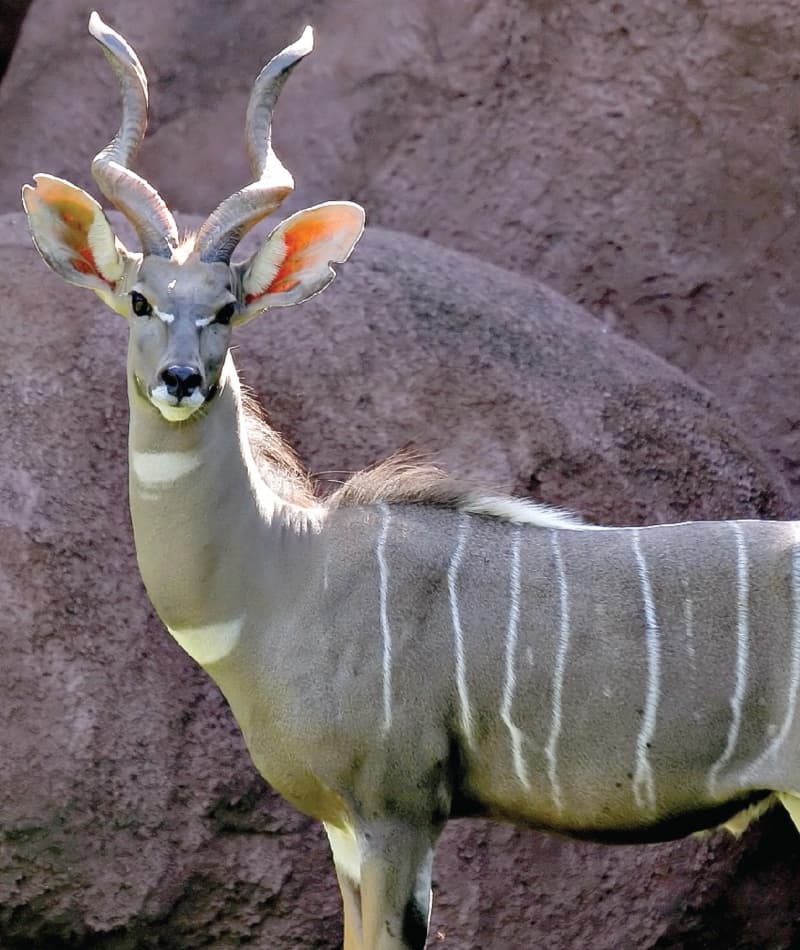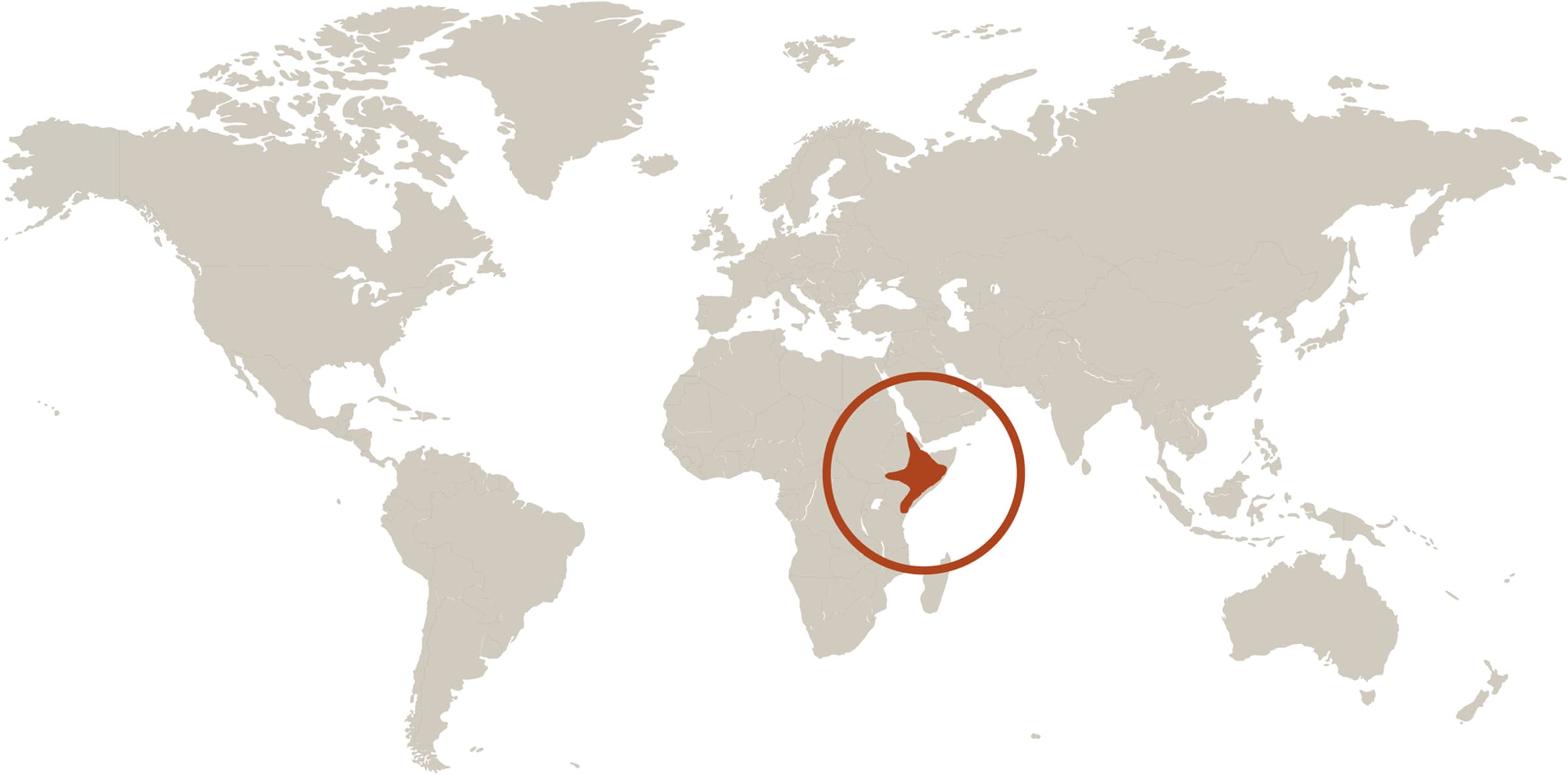
Lesser Kudu
Tragelaphus imberbis
Did you know?
- Lesser kudu are part of the Bovidae family, which they share with bison and cattle.
- The head of the male lesser kudu, with his elegant spiraled horns, is the symbol of the Saint Louis Zoo.
- They live in thickets in East Africa.
- Lesser kudus weigh 130 to 230 pounds and are 35 to 43 inches tall.
- They eat a variety of leaves, shrubs, grasses, herbs and roots.
Adaptations
Lesser kudus have adaptations that help protect them from predators. Their coats are marked with vertical white body stripes, which camouflage them in their woodland habitat. Their large ears give them exceptional hearing. They often hide in dense vegetation during the day, preferring to browse or graze in the early morning and late evening.
Young and Family
Lesser kudus are sexually dimorphic, which means males and females look distinctly different. Males are larger, dark grey and have horns; females are smaller, brown and do not have horns. Males often live alone, whereas females will live in small groups. A female will give birth to one calf.
Threat Level
- Unknown
- Common
- Near Threatened
- Threatened
- Endangered
- Critically Endangered
- Extinct in the Wild
Near Threatened
The Lesser Kudu's population is decreasing, and this species faces a risk of extinction in the wild.
Range
Eastern Africa
Habitat
Thickets

We care about lesser kudus
The Saint Louis Zoo supports lesser kudu in Red Rocks at the Zoo. Learn more about how we are helping wildlife around the world.
Find this animal in Red Rocks

SAINT LOUIS ZOO ZONE
Red Rocks
At Red Rocks, you’ll view some of the world’s most powerful predators living near some of the world’s most graceful prey. Lions, tigers, zebra and giraffes all share the natural rocky boulders and outcroppings as their territory. With shading trees and a bird or two among the mammals, Red Rocks is a great place to spend a day at the Saint Louis Zoo.

